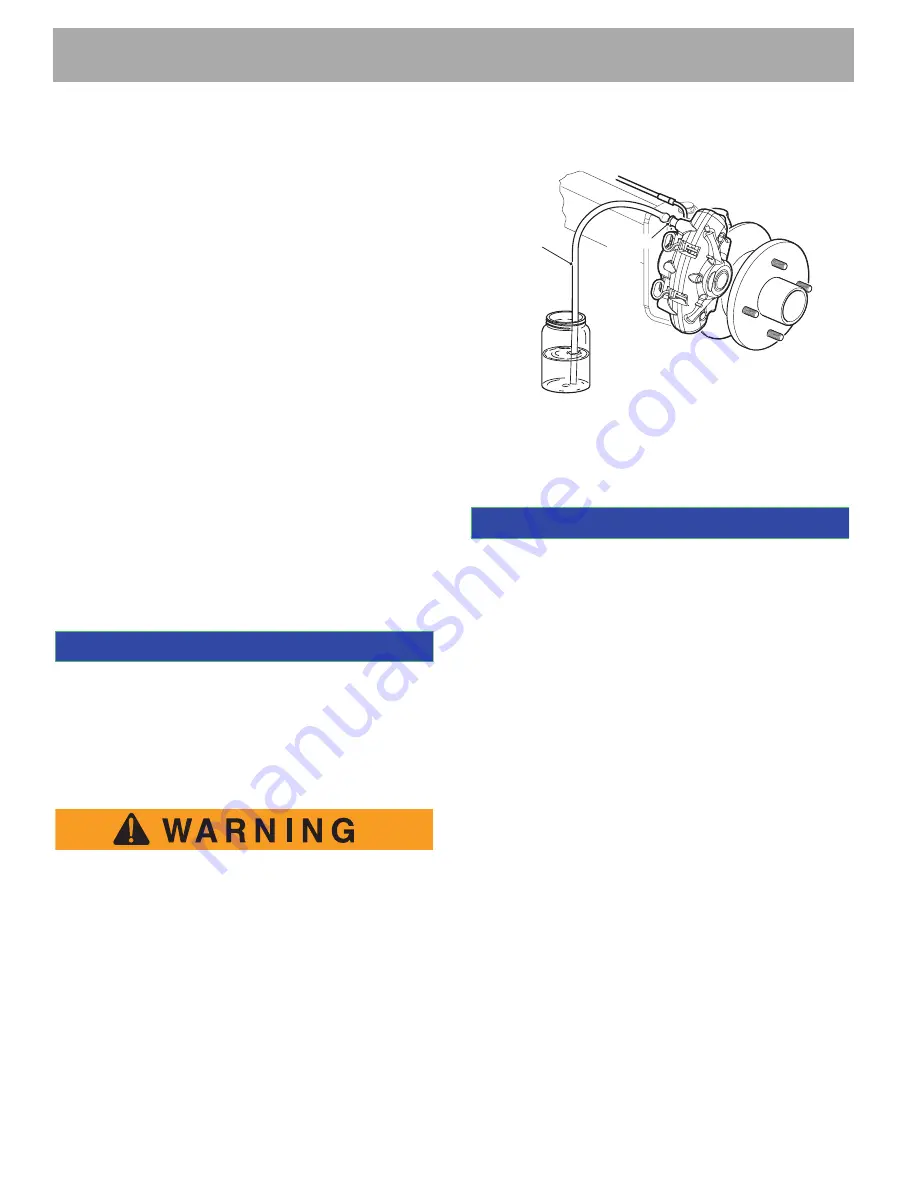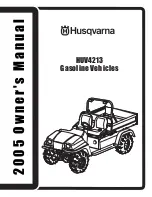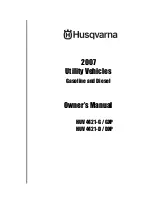
Page K-24
Repair and Service Manual
B
BRAKES - FRONT DISC
Read all of Section B and this section before attempting any procedure. Pay particular attention to Notices, Cautions, Warnings and Dangers.
actuator pivot and the linkage rod (See Actuator linkage
bushings).
The clevis pin joining the brake cylinder clevis and the
upper actuator pivot must be removed by removing the
cotter pin and discarding. Remove clevis pin.
Remove Locknut from shoulder bolt and remove shoul-
der bolt. Pivot components may now be removed and
bushing removed and replaced with new ones. Be sure
to replace the nylon bushing with the flange oriented up.
Reassemble using new cotter pins. and tighten lock nut
to 5 - 10 ft. lbs. (6.7 - 13.5 Nm) torque.
BLEEDING BRAKES
Tool List
Qty.
Hose ........................................................................ A/R
Clean Container........................................................... 1
Brake Fluid, DOT 3 .................................................. A/R
Wrench, 1/4" box end .................................................. 1
The hydraulic brake system must be free of air to oper-
ate properly. Air can enter the system when hydraulic
parts are disconnected for servicing or replacement, or
when the fluid level in the master cylinder reservoir is
very low. Air in the system will give the brake pedal a
spongy feeling upon application.
An assistant will be necessary to perform this procedure.
Use a clean cloth to wipe off the master cylinder reser-
voir and wheel cylinder bleeder valves (Ref. Fig. 30).
Clean each fitting before opening to prevent contaminat-
ing the system. Open the master cylinder reservoir and
top off with standard automotive DOT 3 brake fluid.
Never reuse any excess fluid or return to the
original container. Dispose of brake fluid prop-
erly.
Brake fluid should never be returned to the original con-
tainer and reused due to the possibility of contamination
by dirt, grease, moisture or used brake fluid which could
cause failure of the braking system. Dispose of in accor-
dance with Federal, state and local codes.
Attach a short length of clear hose to the caliper bleed
valve and insert the other end into a suitable clean con-
tainer containing fresh, clean brake fluid (Ref. Fig. 31).
Check the fluid level in the master cylinder frequently
during this operation to prevent air from entering the
lines.
Fig. 31 Bleeding Brakes
Starting with the passenger side rear brake and going to
the driver side rear brake, bleed the brakes using the fol-
lowing procedure:
The bleeder valve at the caliper must be closed at the end of
each stroke and before the brake pedal is released to insure
that air cannot enter the system. It is also important that the
brake pedal be returned to full ‘up’ position.
Open the bleeder valve and have an assistant depress
brake pedal
gently
until fluid flows into container. Close
the bleeder valve and have the assistant slowly release
the brake pedal. Repeat the process until no bubbles
can be seen leaving the bleeder valve. Close the valve
and repeat at other side. After bleeding, check fluid level
using a mechanics mirror and a flashlight. Add fluid if the
level has fallen below 1/4” from the top of the reservoir
and inspect for visible fluid leaks.
NOTICE
Bleeder
Hose
Bleeder
Hose
Bleeder
Valve
NOTICE
Summary of Contents for EXPRESS L6 2012
Page 6: ...Page iv Repair and Service Manual NOTES TABLE OF CONTENTS...
Page 201: ......
















































